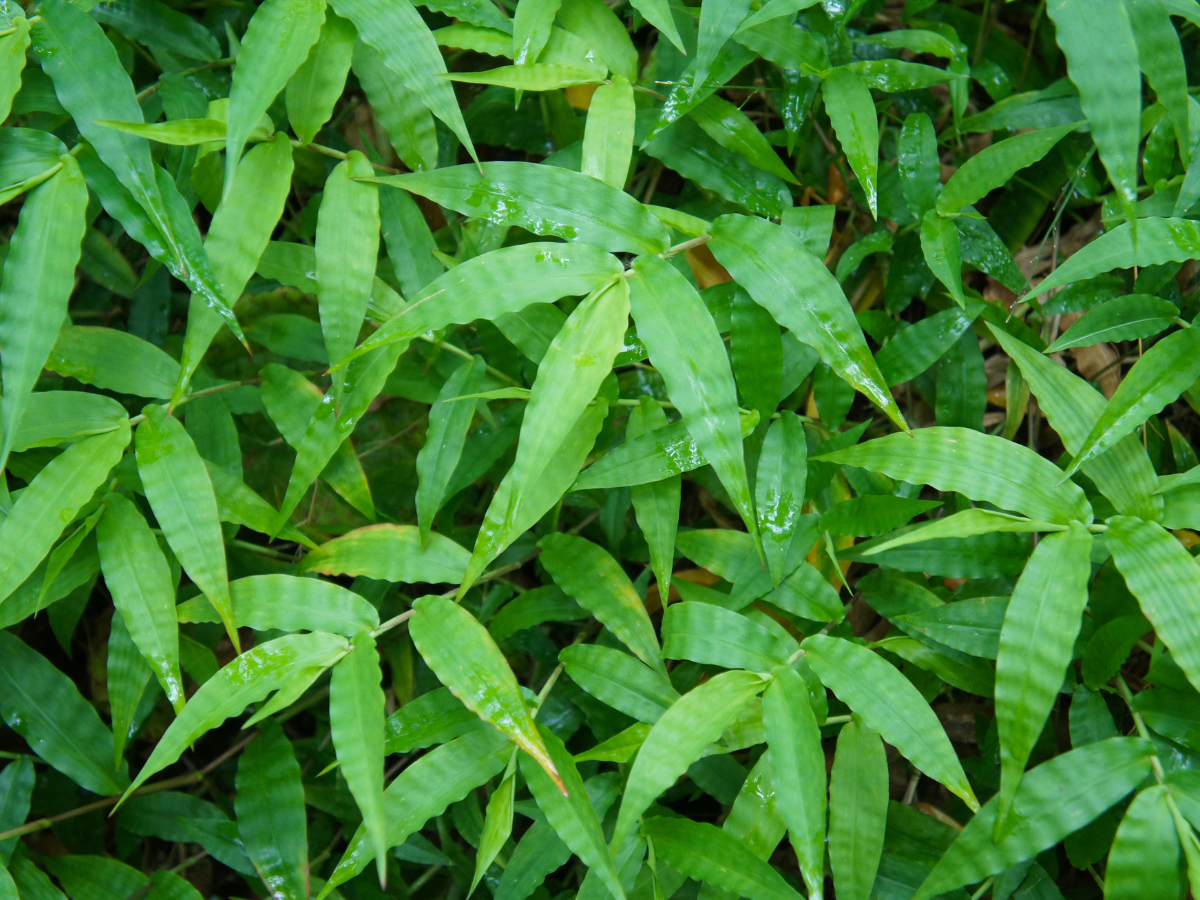Basket grasses are a group of flowering plants in the Poaceae grass family Though they grow around the world, basket grasses are most common in tropical and subtropical regions Their name comes from their historical use in weaving baskets. Let’s explore the origins and uses of these versatile grasses.
What Are Basket Grasses?
The most well-known basket grasses belong to the genus Oplismenus. There are about 17 species in this genus, including Oplismenus hirtellus and Oplismenus undulatifolius.
Oplismenus hirtellus, also called wavyleaf or woodland basketgrass, is native to the southeastern United States. It has deep reddish-purple flowers and grows up to 12 inches tall. O. undulatifolius, known as wavy leaf basket grass, has white flowers and is native to Europe and parts of Africa and Asia. It’s considered an invasive species in the US.
Both Oplismenus species have long, thin leaves with a wavy margin Their flowering stems grow upright above the leaves The stems are sticky and bear small seeds that cling to animal fur and clothing, aiding seed dispersal.
Outside the Oplismenus genus, other grasses called basket grasses include bulrushes in the genus Schoenoplectus and species in the sedge family, Cyperaceae. Common names can sometimes lead to confusion about plant relationships. Proper botanical names help identify species more precisely.
Traditional Uses as Basketry Materials
Indigenous peoples have woven with basket grasses for centuries. Historical records and oral traditions confirm the importance of these plants for making baskets, mats, hats, clothing, fishing nets, games, ceremonial objects, and more.
On the northwest coast of North America, native tribes traditionally wove baskets from Schoenoplectus pungens, also known as common threesquare or American bulrush. Its stiff, triangular stems provided the framework. More flexible grasses were woven between them.
Oplismenus species also played a role. In Hawaii, O. hirtellus stems contributed to basketry. O. undulatifolius is still used for weaving in parts of Africa and Asia where it originates. The term “basket grass” recognizes these historical connections.
The Spread Beyond Native Ranges
While humans have moved some basket grasses intentionally, others have arrived in new places by accident. Oplismenus undulatifolius has now spread from gardens to natural areas across much of the eastern US.
After being recorded in Maryland in 1996, O. undulatifolius was initially identified as a variety of O. hirtellus native to Europe and Africa. Further research recognized it as a separate, non-native species in the US. It likely escaped from ornamental plantings.
In Hawaii, O. hirtellus was first documented in 1819. With purple flowers matching the tropical native, it seems to be a long-established Polynesian introduction, unlike the more recent O. undulatifolius. Its weediness in Hawaii merits “naturalized” status.
Growth Habits and Ecology
Understanding basket grass growth patterns sheds light on how these species spread. Most basket grasses thrive in moist soils and part shade. Oplismenus species tolerate a range of light conditions from full sun to deep shade.
Wavyleaf basketgrass invades forests in the eastern US. It carpets the ground, blocking light from reaching native plants. Schoenoplectus pungens grows in wetlands across North America. Large stands stabilize shorelines and provide food and habitat for birds and other wildlife.
Basket grasses spread both vegetatively and by seed. Their wiry, branching rhizomes creep through the soil, forming new clumps. Humans, animals, wind, and water disperse the sticky seeds. Vigorous growth makes basket grasses successful colonizers.
Ongoing Uses and Management Concerns
Basket grasses remain culturally significant for indigenous weaving traditions. But habitat loss limits access to some traditional basketry plants like Schoenoplectus pungens. Groups work to preserve wetland gathering sites.
Meanwhile, the invasiveness of Oplismenus undulatifolius raises ecological concerns. Land managers monitor its spread and impacts on native species. Physical and chemical control methods help limit populations.
Gardeners should take care to avoid planting O. undulatifolius. Continued study of basket grass biology and control measures is needed. Their cultural legacy reminds us to weigh complex plant relationships carefully.
Basket grasses show how species with a long history of human use can become invasive plants. Yet they still provide value for traditional arts. Understanding their origins and behavior allows us to manage basket grasses thoughtfully.

k
Invasive Species Spotlight — Wavyleaf Basketgrass
FAQ
What is basket grass good for?
Is basket grass invasive?
How do you get rid of basketgrass?
How does basket grass spread?
Is basketgrass a weed?
Basketgrass is the common name of a species of Oplismenus, a weed commonly found in shady lawns and landscapes. It is also known as woodsgrass, jewgrass and wavyleaf basketgrass. Many species of Oplismenus grow in Central Florida and Oplismenus setarius is a native perennial while Oplismenus hirtellus is an introduced exotic.
What is wavyleaf basketgrass?
It is also known as woodsgrass, jewgrass and wavyleaf basketgrass. Many species of Oplismenus grow in Central Florida and Oplismenus setarius is a native perennial while Oplismenus hirtellus is an introduced exotic. Both species, and others, can be troublesome in home lawns.
Is basket grass a perennial?
Basket grass is a hardy perennial in USDA growing zones 7 to 11. Is troubled by few insect or disease issues. If the blades appear frost damaged or show signs of wind or time abuse, simply trim back to 6 to 8 inches from the ground and the blades will spring back wonderfully. Most lomandras are comfortable in full sun to mostly shaded spots.
Does basketgrass grow in shade?
Andrea, Basketgrass prefers to grow in the shade. That is why you are observing it in the shade in your yard, while you see the Bermudagrass in the sun (it prefers sun). Hi Derek, Usually, I won’t identify a snake via description alone because of the very minute differences in species but this one is pretty distinct.
